In today’s connected world, wireless routers have become indispensable. I remember when I first set up my home network; the jargon was overwhelming, and the choices were endless. In this guide, I’ll walk you through everything you need to know about wireless routers, sharing my experiences and insights to help you make informed decisions.

What is a Wireless Router?
A wireless router is a device that connects multiple devices to the internet without the need for physical cables. It acts as a central hub for your home or office network, managing and directing data traffic to ensure that all your devices can access the internet seamlessly. When I first set up my wireless router, it was a revelation—no more tripping over cables!
How Does a Wireless Router Work?
Understanding how a wireless router works can seem daunting, but let me break it down for you. The router connects to your internet service provider (ISP) via a modem. It then uses radio waves to transmit data between the internet and your devices. Think of it as a traffic cop, directing data to the right destinations. I often imagine it like the post office, sorting and delivering packets of information to the correct addresses.
Popular Wireless Router Brands and Models
Choosing the right router can be overwhelming, given the plethora of options available. Here are some popular brands and models I’ve used or researched extensively.
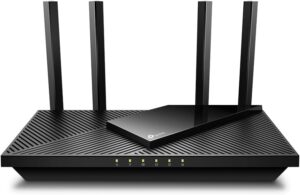
The TP-Link AX1800 Wi-Fi 6 Router (Archer AX21) is a dual-band WiFi 6 Internet Router with Wi-Fi 6 (802.11ax) technology that achieves faster speeds, greater capacity, and reduced network congestion compared to the previous generation.
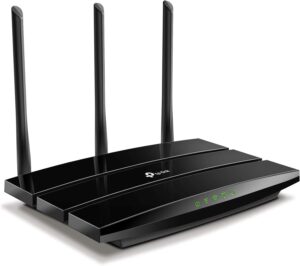
The TP-Link AC1900 Smart WiFi Router (Archer A8) has boosted WiFi coverage. Beamforming technology delivers a highly efficient wireless connection and long-range WiFi.
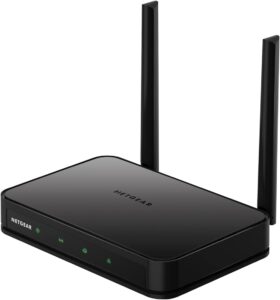
The NETGEAR Dual Band WiFi Router (R6020) has a fast AC750 WiFi 5 speed for reliable streaming, gaming, surfing, and connecting smart home devices.
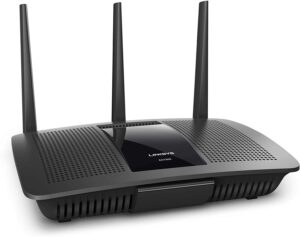
The Linksys EA7300 Wireless Router provides up to 1,500 square feet of Wi-Fi coverage for 10-plus wireless devices.
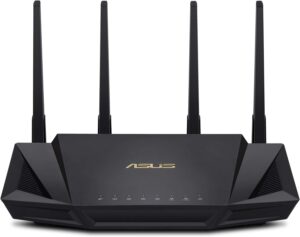
The ASUS RT-AX3000 Wireless Router is the Next-Gen WiFi Standard – Future proof your home network with the next-gen WiFi 6 technology, which provides up to 2.7x faster speed than the previous WiFi generation featuring OFDMA and MU-MIMO technology.
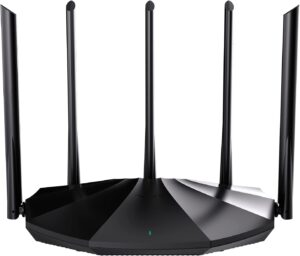
The Tender WiFi 6 Router With next-gen Wi-Fi 6 technology, RX2Pro adopts MU-MIMO plus OFDMA to significantly improve network performance and efficiency, and wipe out latency. Enjoy smoother and more stable streaming, gaming, downloading, and more with WiFi speeds up to 1501 Mbps (2.4 GHz: 300 Mbps, 5 GHz: 1201 Mbps).
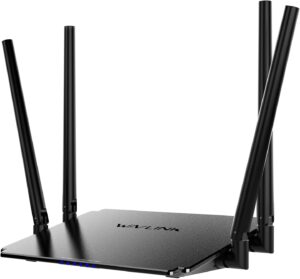
With the WAVLINK AC1200 Wireless WiFi Router, you will experience unparalleled WiFi 5 speed. Harness the power of WiFi 5 technology to enjoy combined wireless speeds of up to 1200 Mbps, ensuring seamless browsing, streaming, and gaming experiences. Benefit from lower latency and faster response times, allowing for smoother online gaming and lag-free video calls. 4 LAN ports (10/100 Mbps) allow you to connect to your wired devices directly.
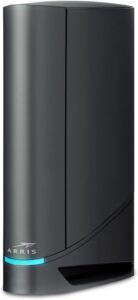
ARRIS Surfboard G34 DOCSIS is a trusted name in home connectivity. Get high speeds, low latency, and a two-in-one product! With the ARRIS SURFboard G34 Wi-Fi Cable Modem, you will increase your network capability and get ultra-fast streaming and downloading throughout your home. From a trusted brand with over 260 million modems sold and growing.
Key Features to Consider When Buying a Wireless Router
When I was shopping for my wireless router, I was overwhelmed by the myriad of features. Here’s a breakdown of the essential ones to consider:
Speed and Bandwidth
The speed of a router is measured in megabits per second (Mbps). Higher speeds mean faster data transmission. Dual-band and tri-band routers can manage multiple devices more efficiently. When I upgraded to a dual-band router, I noticed a significant improvement in streaming and gaming performance.
Range
The range of a router determines how far its signal can reach. If you live in a large house, a router with a strong range is crucial. I once had a router that couldn’t reach the upstairs bedroom—frustrating, to say the least.
Security Features
Look for routers with robust security features like WPA3 encryption and a built-in firewall. I sleep better knowing my network is secure from potential threats.
Number of Ports
Consider the number of Ethernet ports for wired connections and USB ports for sharing devices like printers. My current router has four Ethernet ports, which is perfect for my home office setup.
Ease of Use
Some routers come with user-friendly interfaces and mobile apps for easy setup and management. I love being able to control my network settings right from my phone.
Setting Up Your Wireless Router
Setting up a wireless router can be a breeze if you follow these steps. I remember my first time setting up a router—it was intimidating, but I managed with a bit of patience.
Step 1: Unbox and Inspect
Start by unboxing your router and checking that all components are included: the router, power adapter, Ethernet cable, and instructions. I like to lay everything out neatly before starting.
Step 2: Connect to the Modem
Connect your router to the modem using the Ethernet cable. The cable should go from the modem’s output port to the router’s input port. It’s like plugging in a lamp—simple.
Step 3: Power Up
Plug in the router and modem, and power them on. Wait for the router’s indicator lights to stabilize. I usually take this time to grab a coffee and let the devices do their thing.
Step 4: Access Router Settings
Using a computer or smartphone, connect to the router’s default Wi-Fi network. Open a web browser and enter the router’s IP address (usually found in the manual). This takes you to the router’s settings page. The first time I did this, I felt like a tech wizard!
Step 5: Configure Settings
Follow the setup wizard to configure your network name (SSID) and password. Ensure you set a strong password to keep your network secure. I always opt for something memorable but complex.
Step 6: Test the Connection
Finally, test your internet connection by opening a web page or streaming a video. If everything works, congratulations—you’ve set up your wireless router!
Optimizing Your Wireless Network
Once your router is up and running, there are several ways to optimize your network for better performance. Here are some tips I’ve picked up over the years.
Placement Matters
The placement of your router can significantly impact its performance. Position it in a central location, elevated, and away from obstructions. I once had my router in a corner, and moving it to the center of the house made a huge difference.
Update Firmware
Regularly update your router’s firmware to ensure you have the latest security patches and performance improvements. I set a reminder every few months to check for updates.
Use Quality of Service (QoS)
Quality of Service (QoS) settings allow you to prioritize certain types of traffic, like streaming or gaming. Enabling QoS on my router helped reduce lag during online gaming sessions.
Secure Your Network
Ensure your network is secure by using strong passwords and enabling encryption (WPA3 if available). I also disable WPS (Wi-Fi Protected Setup) as it can be a security risk.
Monitor Connected Devices
Keep an eye on the devices connected to your network. Most routers have a web interface or app that lets you see all connected devices. I occasionally find devices that I don’t recognize and promptly disconnect them.
Troubleshooting Common Issues
Even the best wireless routers can encounter issues. Here are some common problems and how I troubleshoot them.
Slow Internet Speeds
If your internet is slow, start by checking your router’s placement and ensuring it’s not near any interference sources like microwaves or cordless phones. I also recommend running a speed test to see if the issue is with your ISP.
Connection Drops
If your connection frequently drops, try rebooting your router and modem. I find that a simple restart often resolves the issue. If not, check for firmware updates or consider changing the Wi-Fi channel.
No Internet Connection
If you have no internet connection, ensure all cables are securely connected and check if your ISP is experiencing outages. I once spent hours troubleshooting, only to find out there was a service outage in my area.
Advanced Router Features
Modern routers come with a host of advanced features that can enhance your network experience. Here are a few I’ve found particularly useful.
Guest Network
A guest network allows visitors to connect to the internet without accessing your main network. It’s perfect for when friends come over and want to use your Wi-Fi. I always keep this feature enabled for convenience.
Parental Controls
Parental controls let you restrict access to certain websites and set usage limits for specific devices. This feature has been a lifesaver for managing my kids’ screen time.
VPN Support
Some routers support VPN (Virtual Private Network) connections, which can enhance your online privacy and security. I use a VPN for accessing region-restricted content and protecting my data on public Wi-Fi.
Smart Home Integration
If you have smart home devices, look for routers that support smart home integration. My router works seamlessly with my smart lights and thermostat, allowing me to control everything from a single app.
The Future of Wireless Routers
Wireless technology is constantly evolving, and routers are no exception. Here are some trends and advancements to keep an eye on:
Wi-Fi 6 and Beyond
Wi-Fi 6 (802.11ax) is the latest standard, offering faster speeds, better performance in crowded areas, and improved battery life for connected devices. As more devices support Wi-Fi 6, upgrading to a compatible router can future-proof your network. I’m excited about the potential of Wi-Fi 6 to handle the increasing number of smart devices in my home.
Mesh Networks
Mesh networks use multiple nodes to provide seamless coverage across larger areas. They’re ideal for eliminating dead zones in your home. I’ve seen mesh networks in action, and the consistent connectivity is impressive.
AI and Machine Learning
Some modern routers are incorporating AI and machine learning to optimize network performance and security automatically. These routers can learn from your usage patterns and adjust settings for optimal performance. I’m curious to see how AI will continue to enhance home networking.
Integration with IoT Devices
As the Internet of Things (IoT) grows, routers will increasingly support and manage a variety of smart devices. This integration will make it easier to control and monitor all your smart gadgets from a single point of view. My home is slowly becoming a smart home, and having a router that can handle all these devices is a big plus.
Conclusion
Wireless routers are the backbone of our connected lives, providing the internet access we rely on daily. By understanding how they work and knowing what features to look for, you can choose the right router for your needs and optimize your network for the best performance.
I hope this guide has demystified wireless routers and given you the confidence to set up and manage your home network effectively. Whether you’re a tech enthusiast like me or just looking to get your devices online, a good wireless router makes all the difference.
Feel free to reach out with any questions or share your own experiences with wireless routers. Happy surfing!
This comprehensive guide covers the essentials of wireless routers, from basic understanding to advanced features, with practical tips and personal insights. Let me know if you need any additional information or specific sections expanded!

SAMMY MWANGI the editor of Autohomegadgets.com. He is an Electronics Technician enthusiast and a Sales Manager in one of the leading ICT companies in Africa. When he is not working, he loves to travel and explore nature. He is a Robot fanatic too.







